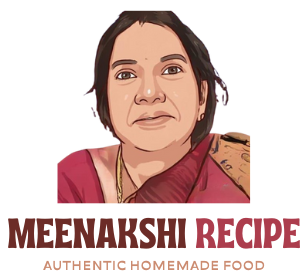Rava, also known as Sooji or Semolina, is a staple in many Indian households. From rava upma to rava laddus, this grainy ingredient plays a starring role in both everyday meals and festive treats.
But with so many health trends encouraging whole grains, millet, or gluten-free alternatives, many people wonder:
Is Rava actually healthy to eat?
Let’s break it down — the nutritional value, health benefits, potential concerns, and how to enjoy Rava as part of a balanced diet.
 What Is Rava?
What Is Rava?
Rava is made from durum wheat, and it’s basically coarsely ground wheat endosperm after the bran and germ are removed. It’s a byproduct of milling wheat and is commonly used in Indian, Middle Eastern, and Mediterranean cuisines.
 Nutritional Profile of Rava (per 100g, approx.)
Nutritional Profile of Rava (per 100g, approx.)
| Nutrient | Value |
|---|---|
| Calories | 360 kcal |
| Protein | 12 g |
| Carbohydrates | 72 g |
| Dietary Fiber | 3–4 g |
| Fat | 1–2 g |
| Iron | 1.2–1.5 mg |
| Magnesium | 30–40 mg |
| B Vitamins | Moderate amount |
Note: These values may vary based on processing and brand.
 Health Benefits of Rava
Health Benefits of Rava
1. Good Source of Energy
Rava is rich in complex carbohydrates, which release energy slowly — making it a great option for breakfast dishes like upma or idli to fuel your day.
2. Promotes Satiety
Rava contains moderate fiber and protein, helping you feel full for longer and avoid unnecessary snacking.
3. Rich in Iron & B Vitamins
Iron helps prevent fatigue and supports healthy red blood cells. The B vitamins in Rava aid in metabolism and nerve health.
4. Easy to Digest
Rava is light on the stomach, especially when roasted. It’s often recommended for people recovering from illness or those needing simple, bland meals.
5. Versatile in Healthy Recipes
You can use Rava to make both sweet and savory dishes — and by pairing it with vegetables or curd, you enhance its nutritional value further.
 Is Rava Suitable for Everyone?
Is Rava Suitable for Everyone?
While Rava offers many benefits, it’s not ideal for all dietary needs:
 1. Not Gluten-Free
1. Not Gluten-Free
Rava is made from wheat and contains gluten. People with celiac disease or gluten intolerance should avoid it.
 2. High in Carbs
2. High in Carbs
If you are on a low-carb or keto diet, Rava is not suitable due to its high carbohydrate content.
 3. Low in Fiber Compared to Whole Grains
3. Low in Fiber Compared to Whole Grains
Since Rava is refined wheat, it has less fiber than whole wheat or millets. For better digestion and blood sugar control, it’s good to balance it with fiber-rich foods.
 Tips for Making Rava Healthier
Tips for Making Rava Healthier
Use less oil/ghee in cooking.
Add vegetables, sprouts, or paneer to dishes like upma or cheela.
Combine Rava with curd or buttermilk for protein and probiotics.
Opt for roasted or steamed recipes (like Rava idli) instead of fried ones (like Rava pakora).
Try Bansi Rava, which is made from harder wheat and has a slightly better nutritional profile.
 Healthy Rava-Based Dishes
Healthy Rava-Based Dishes
| Dish | Health Score | Notes |
|---|---|---|
| Rava Upma |    | Add vegetables, less oil |
| Rava Idli |    | Steamed, light & healthy |
| Rava Dosa |   | Use minimal oil |
| Rava Laddu |  | Occasional treat; high in sugar |
| Suji Halwa |  | Limit ghee & sugar for a lighter version |
 Final Thoughts: Is Rava Healthy?
Final Thoughts: Is Rava Healthy?
Yes — Rava is healthy when consumed in moderation, especially when cooked with mindful ingredients. It provides energy, is easy to digest, and is a great base for nutritious, wholesome meals.
However, for a well-rounded diet, it’s smart to mix Rava with whole grains like millets, oats, or brown rice, and to pair it with fiber, protein, and healthy fats.
So go ahead — enjoy your rava idli or upma, just remember to keep it balanced and colorful with veggies and smart cooking techniques!

 What Is Rava?
What Is Rava? Nutritional Profile of Rava (per 100g, approx.)
Nutritional Profile of Rava (per 100g, approx.) Is Rava Suitable for Everyone?
Is Rava Suitable for Everyone? 1. Not Gluten-Free
1. Not Gluten-Free Tips for Making Rava Healthier
Tips for Making Rava Healthier Healthy Rava-Based Dishes
Healthy Rava-Based Dishes Final Thoughts: Is Rava Healthy?
Final Thoughts: Is Rava Healthy?